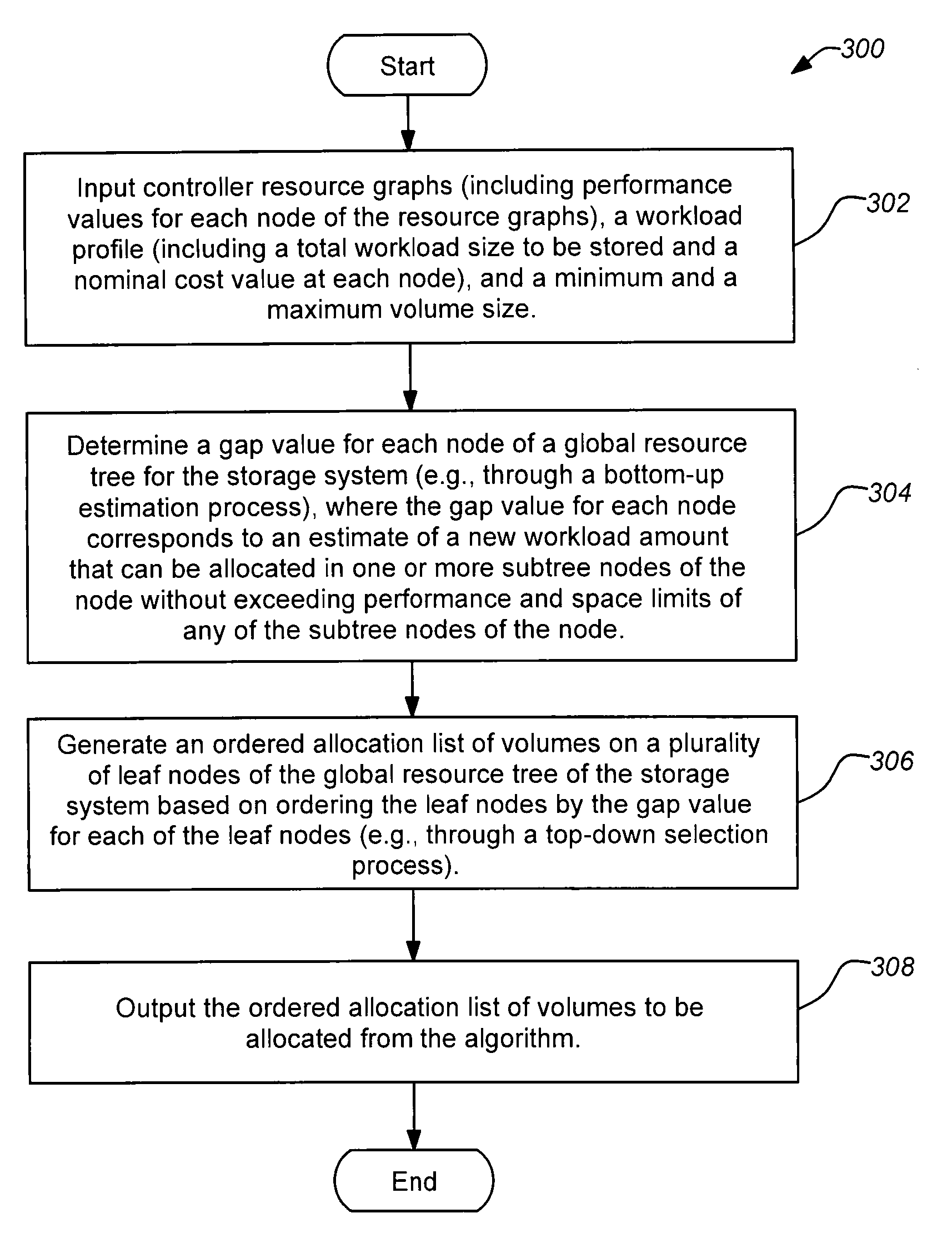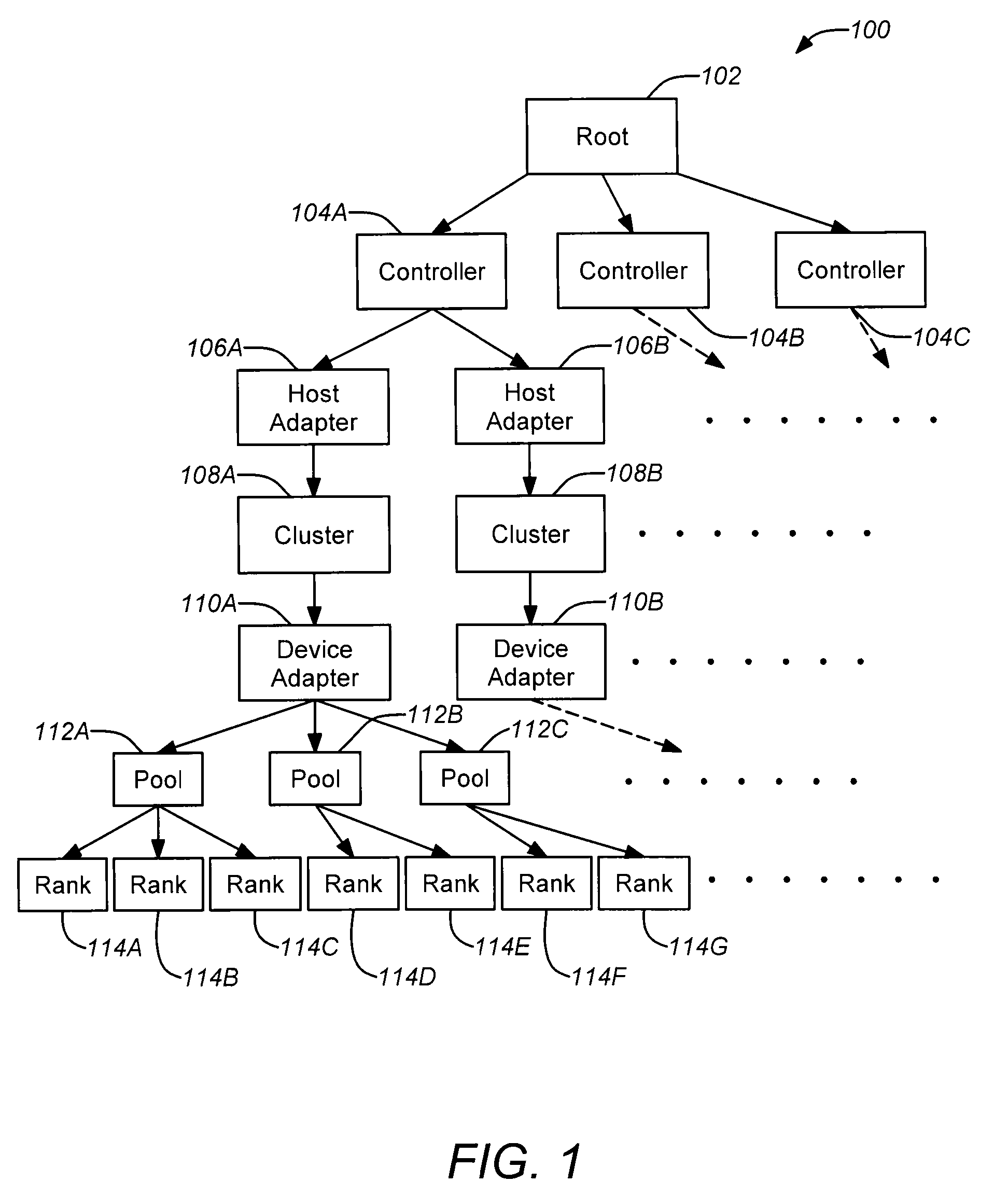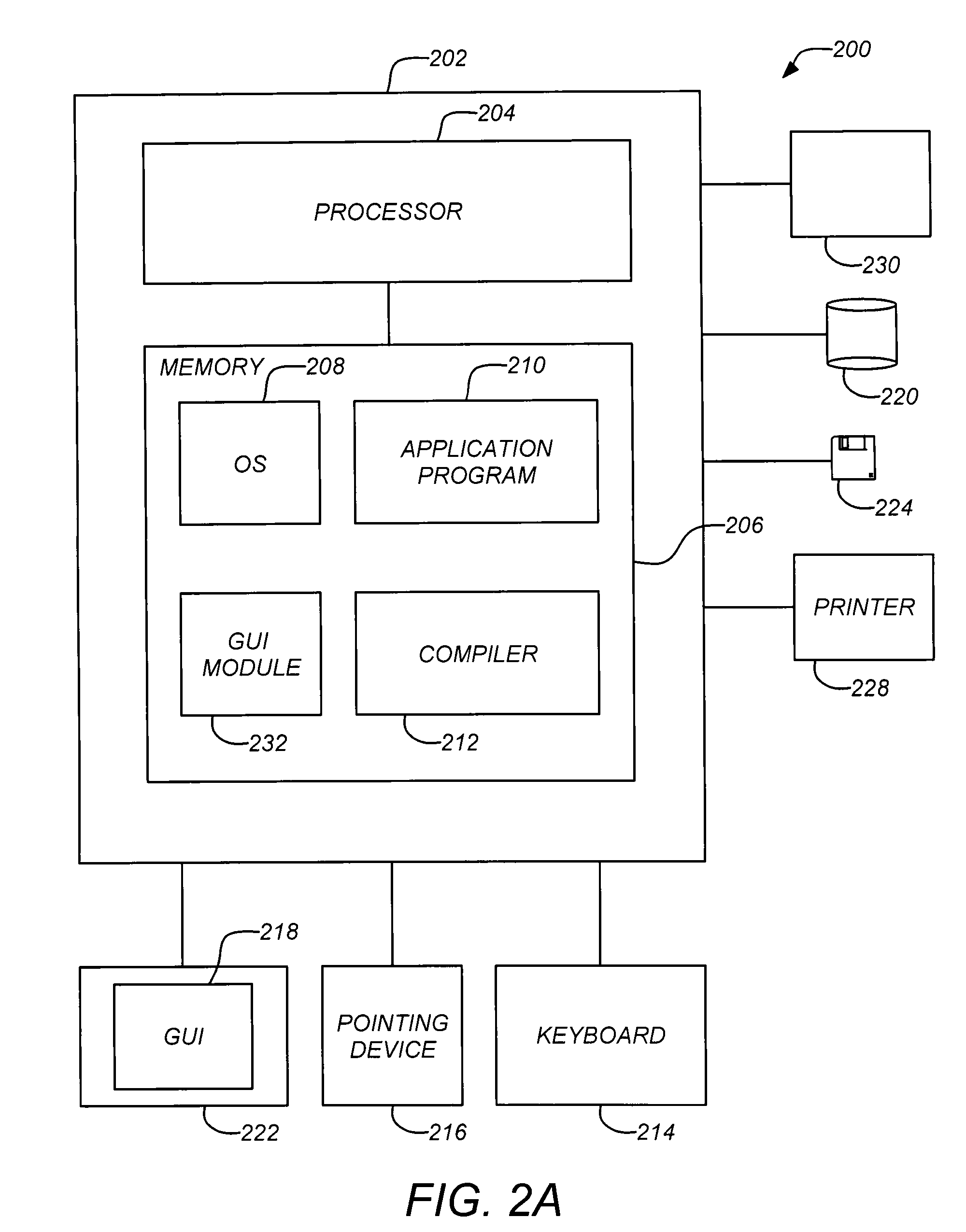Scalable performance-based volume allocation in large storage controller collections
a storage controller and volume allocation technology, applied in the field of large computer storage controller collections, can solve the problems of not being suitable for large dynamic storage control scenarios, current single controller algorithms do not scale well, and tasks become more challenging, so as to achieve balanced load and maintain correctness
- Summary
- Abstract
- Description
- Claims
- Application Information
AI Technical Summary
Benefits of technology
Problems solved by technology
Method used
Image
Examples
Embodiment Construction
[0026]1. Overview
[0027]Placement of new workloads on storage controllers demands careful consideration of factors, such as available space and performance of the various components of the storage controller collection based on current workload. Current algorithms can prove to be inadequate in appropriately balancing the performance of the various components for a large storage controller collection. A new algorithm is provided for provisioning workload volumes on a plurality of storage controllers, taking into consideration the space and performance loads at the various components of the controllers. Experimentation indicates that the new algorithm can outperform existing algorithms in terms of balancing the load across various components of a storage controller collection, resulting in a faster, scalable mechanism for allocating volumes of data. The method when compared to the greedy, random and the state of the art methods can yield lower variances across system components (at dif...
PUM
 Login to View More
Login to View More Abstract
Description
Claims
Application Information
 Login to View More
Login to View More - R&D
- Intellectual Property
- Life Sciences
- Materials
- Tech Scout
- Unparalleled Data Quality
- Higher Quality Content
- 60% Fewer Hallucinations
Browse by: Latest US Patents, China's latest patents, Technical Efficacy Thesaurus, Application Domain, Technology Topic, Popular Technical Reports.
© 2025 PatSnap. All rights reserved.Legal|Privacy policy|Modern Slavery Act Transparency Statement|Sitemap|About US| Contact US: help@patsnap.com



